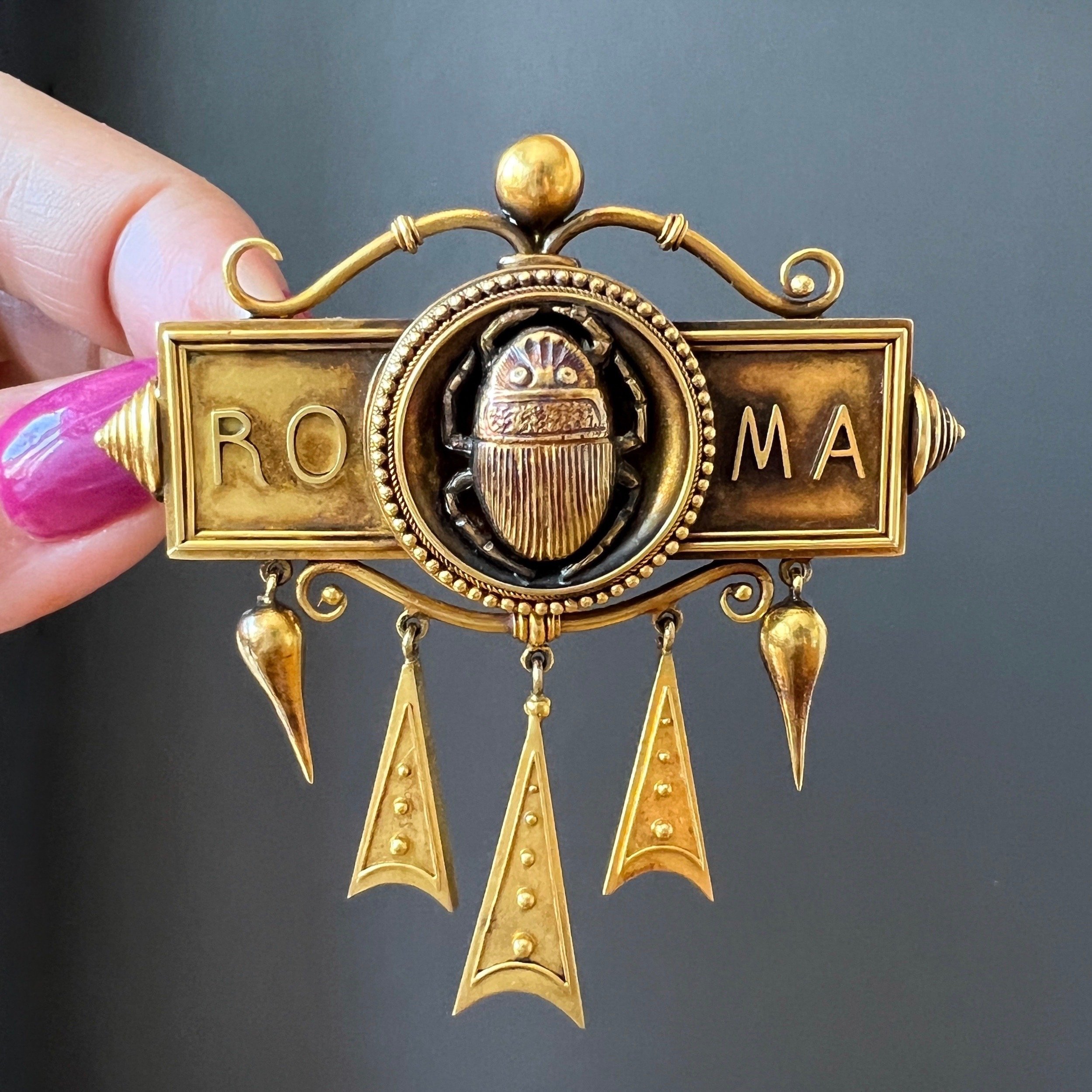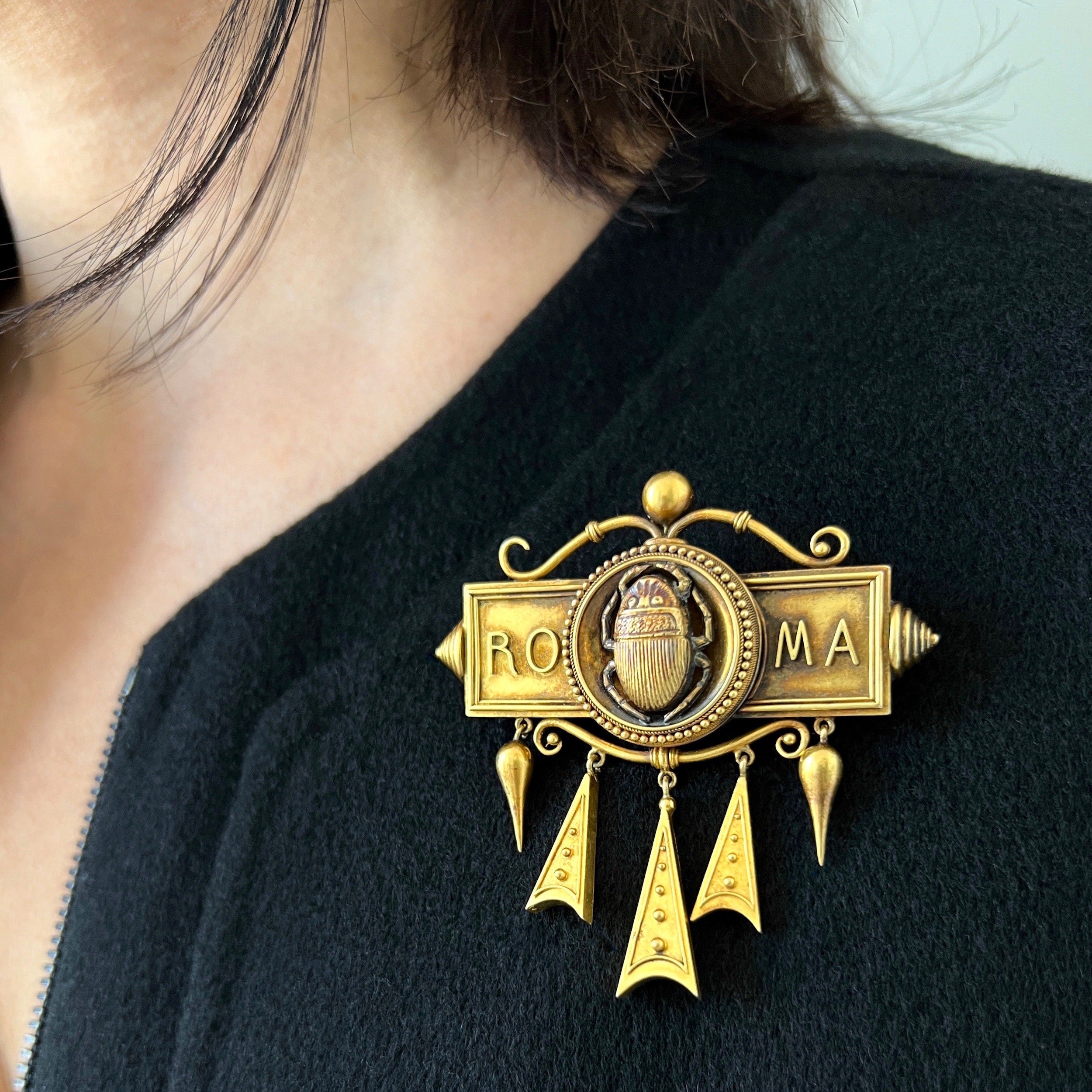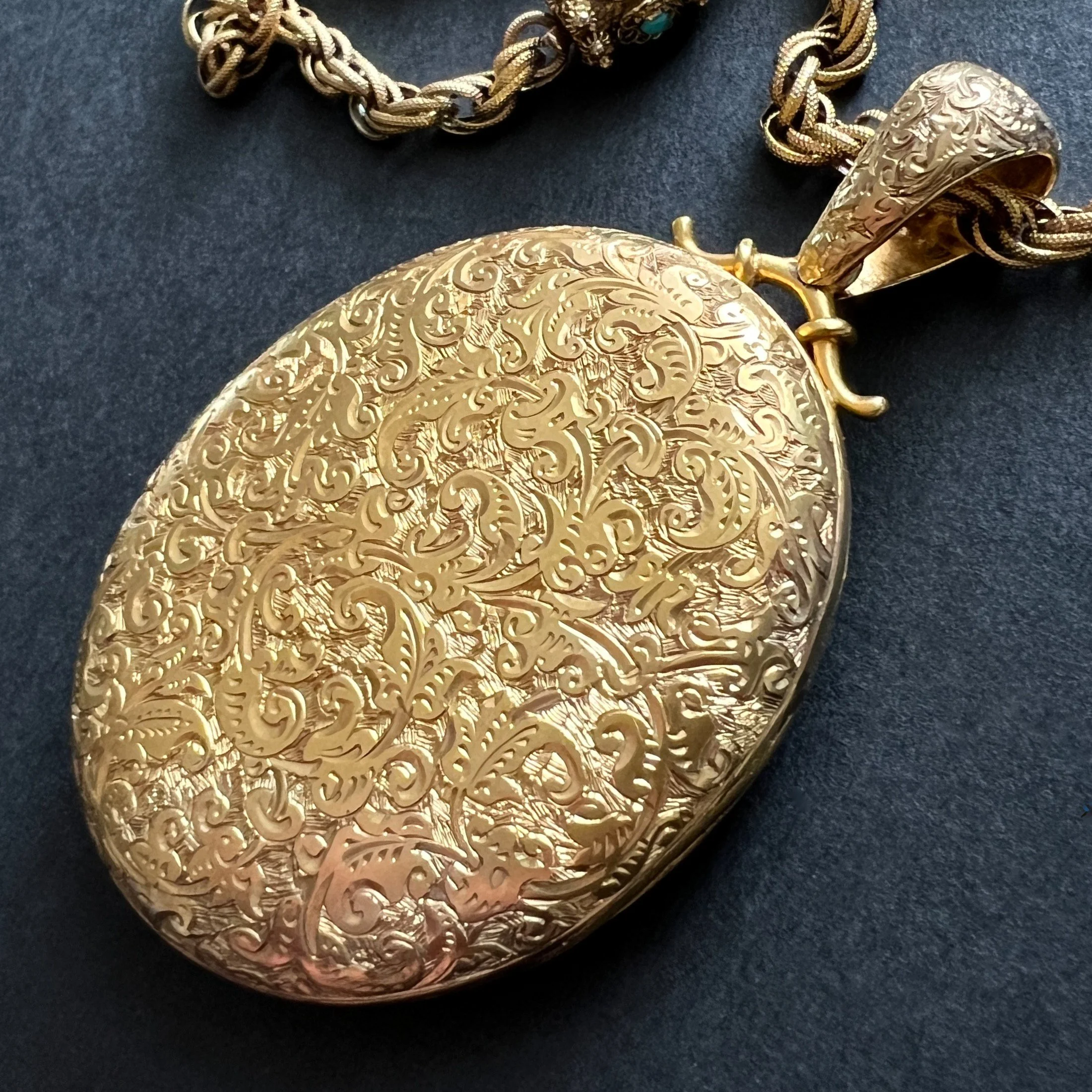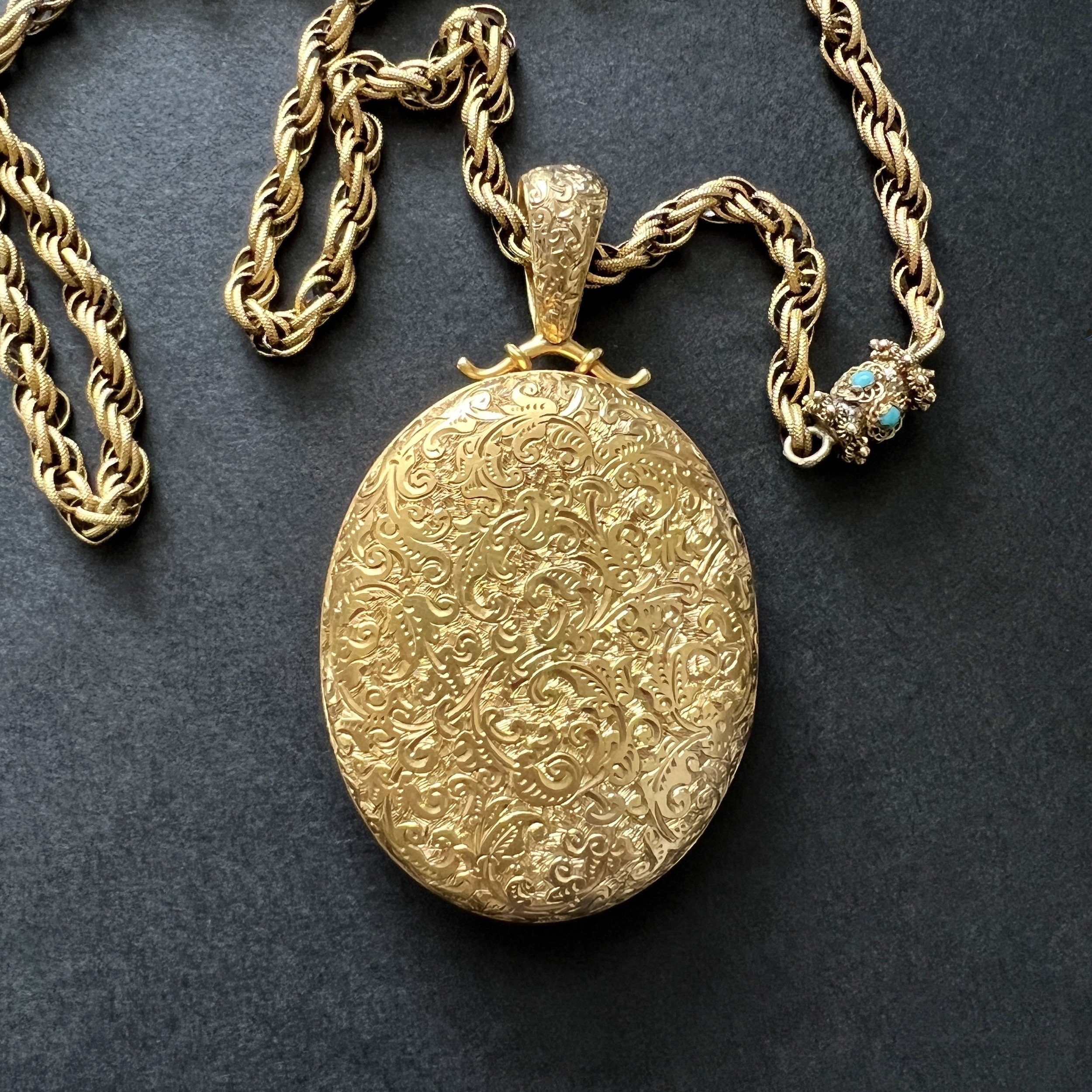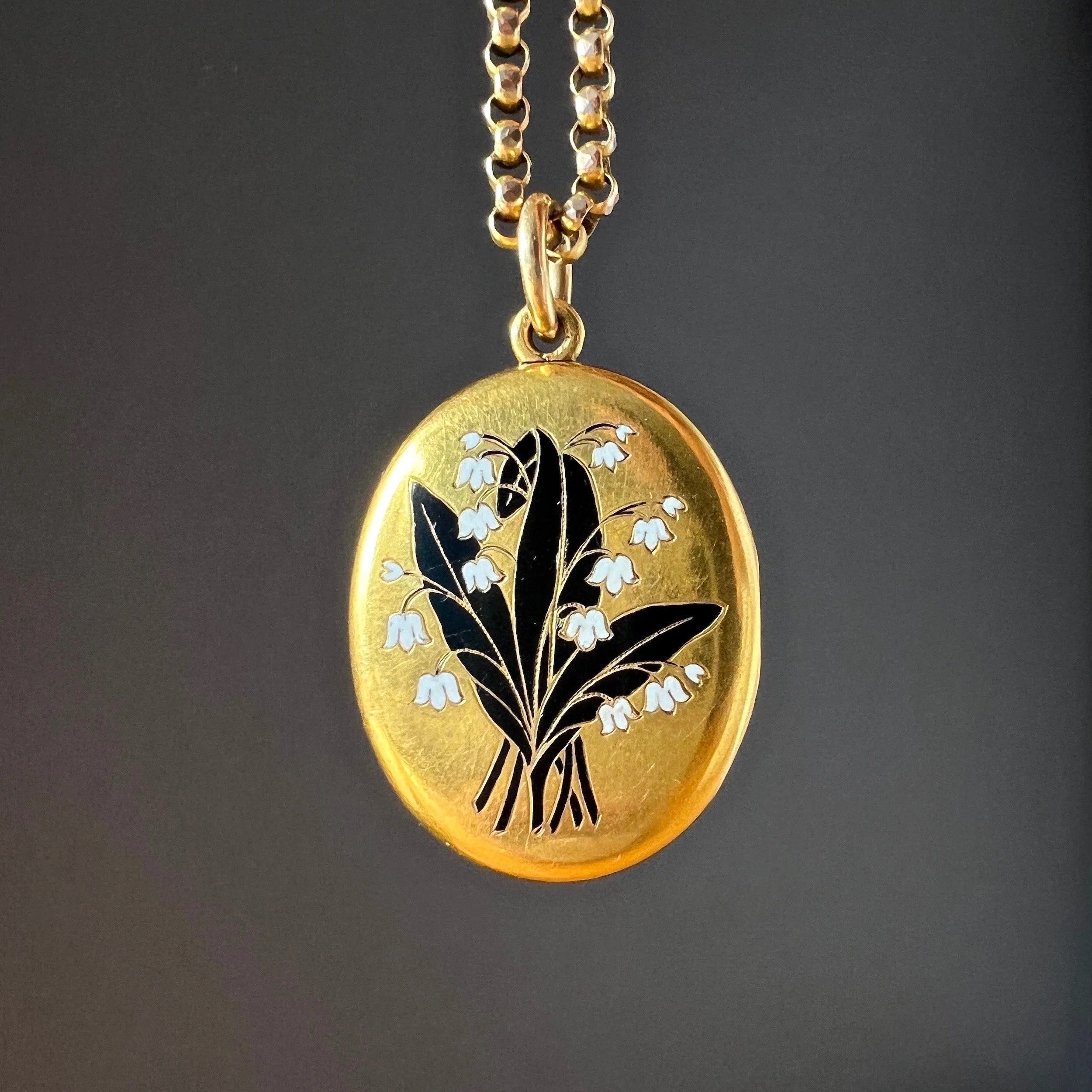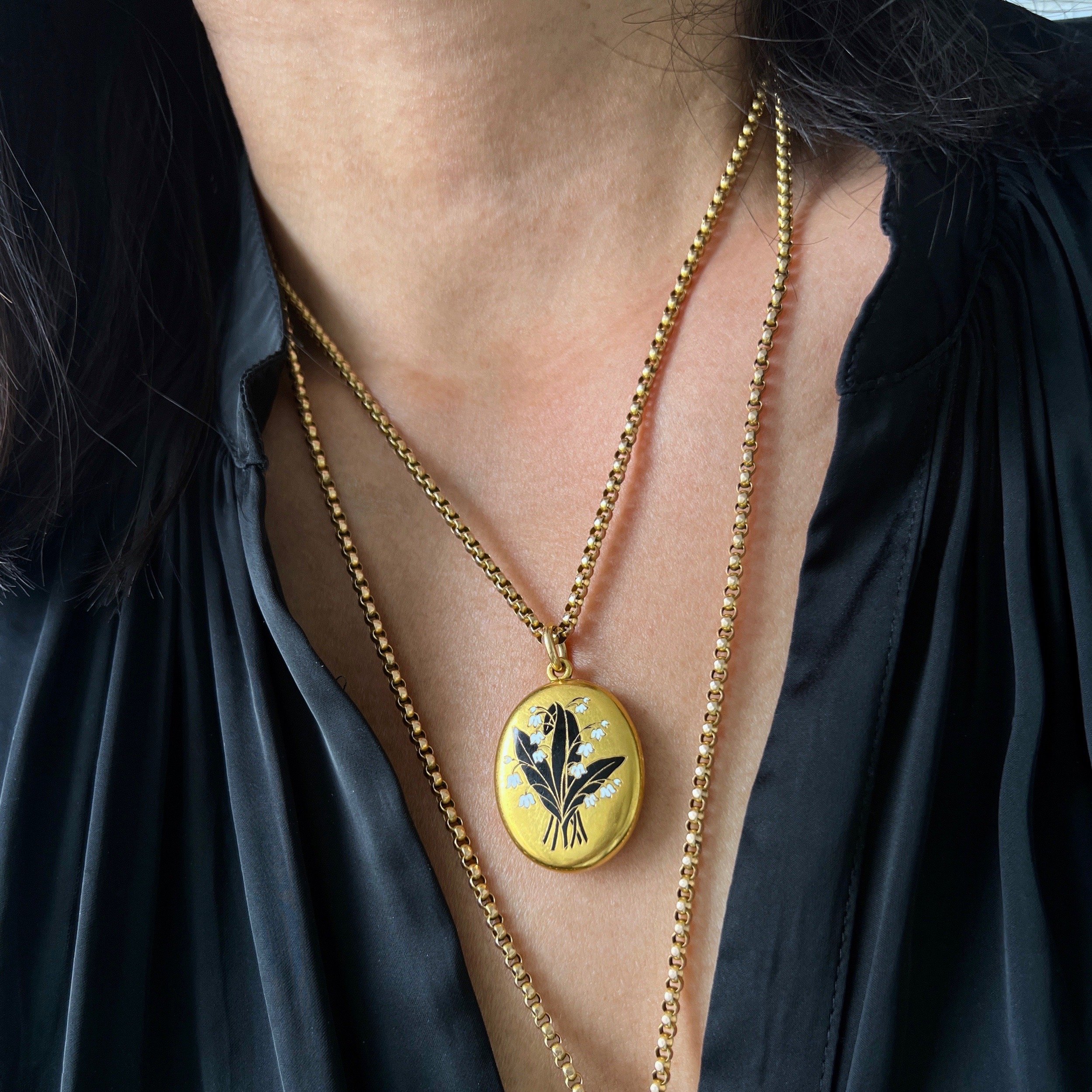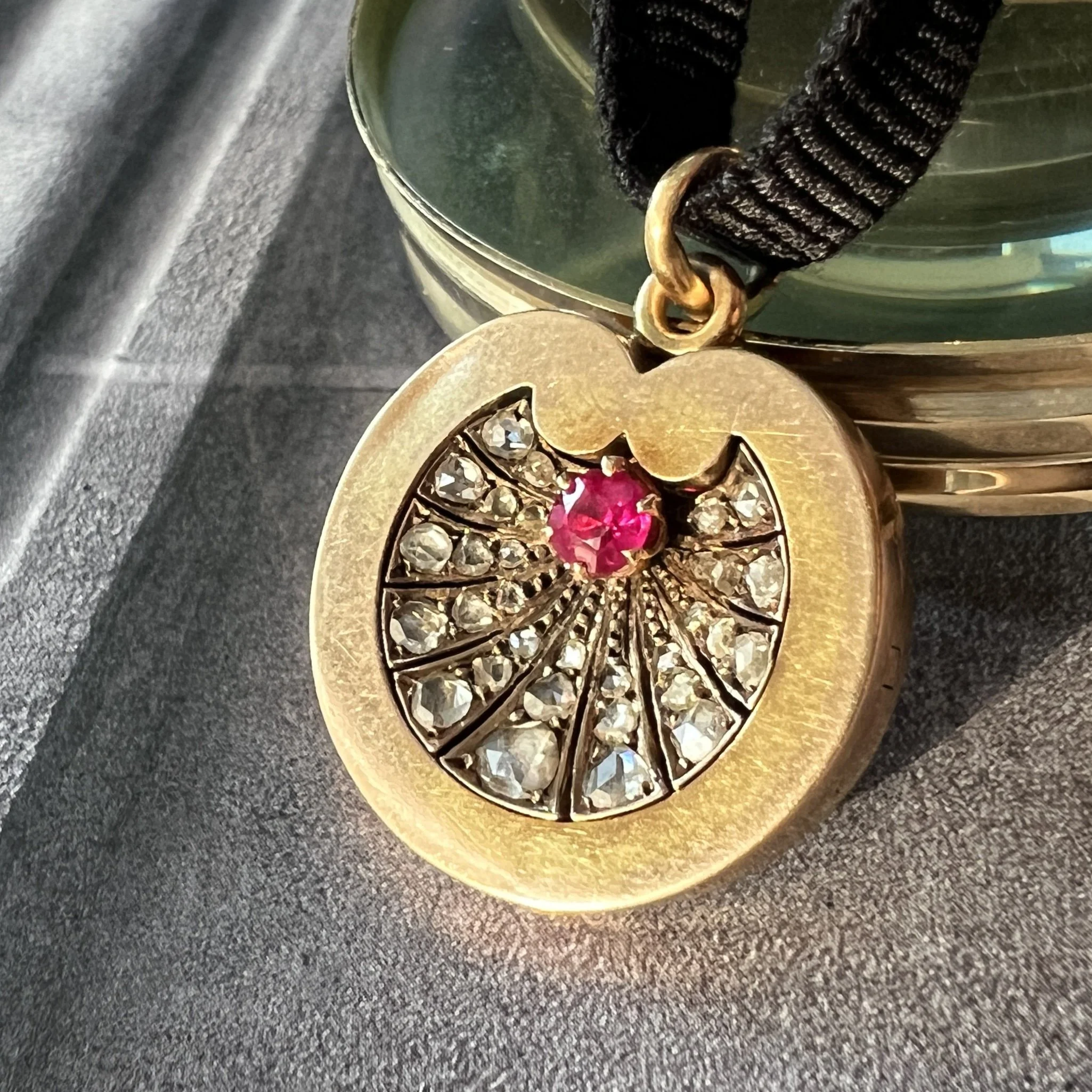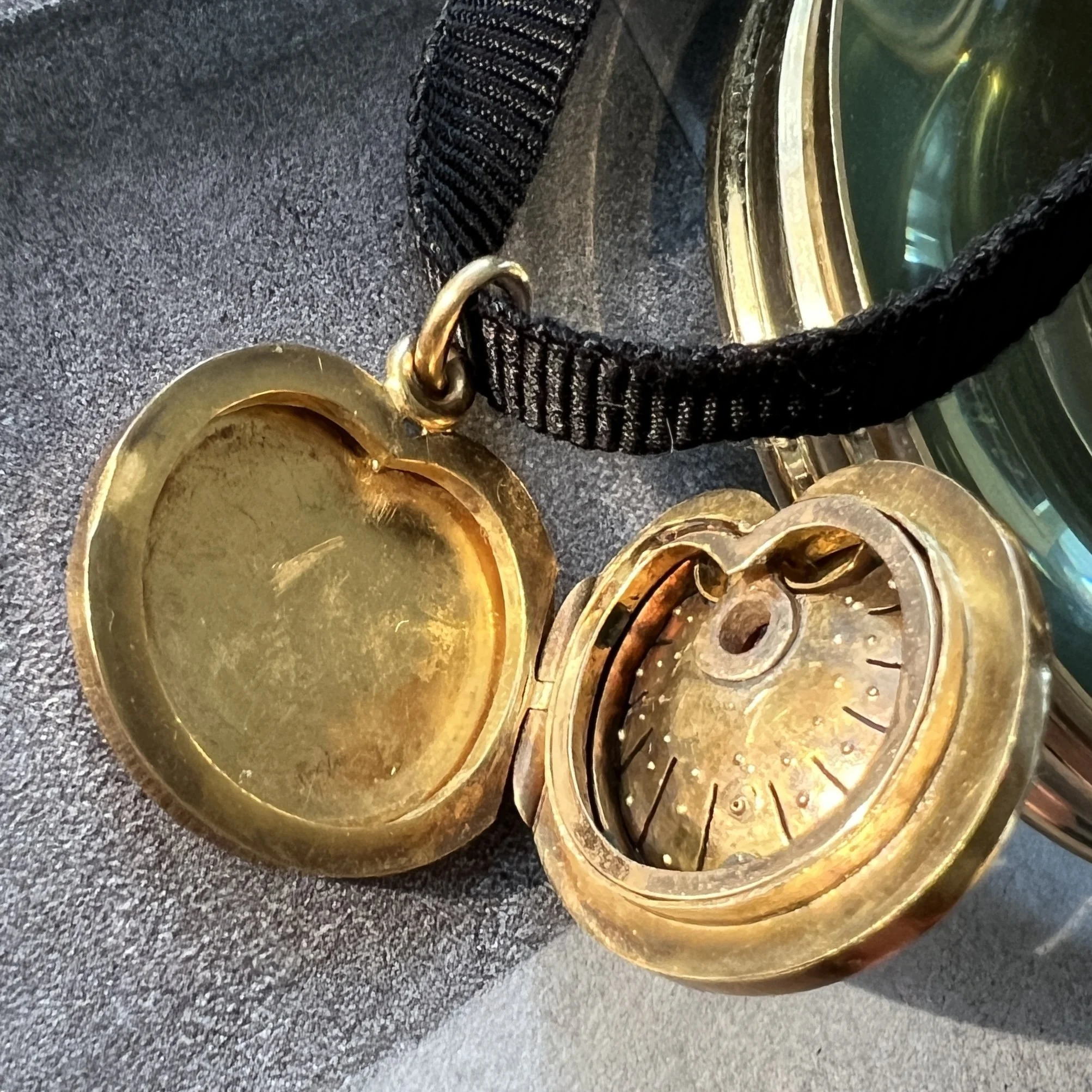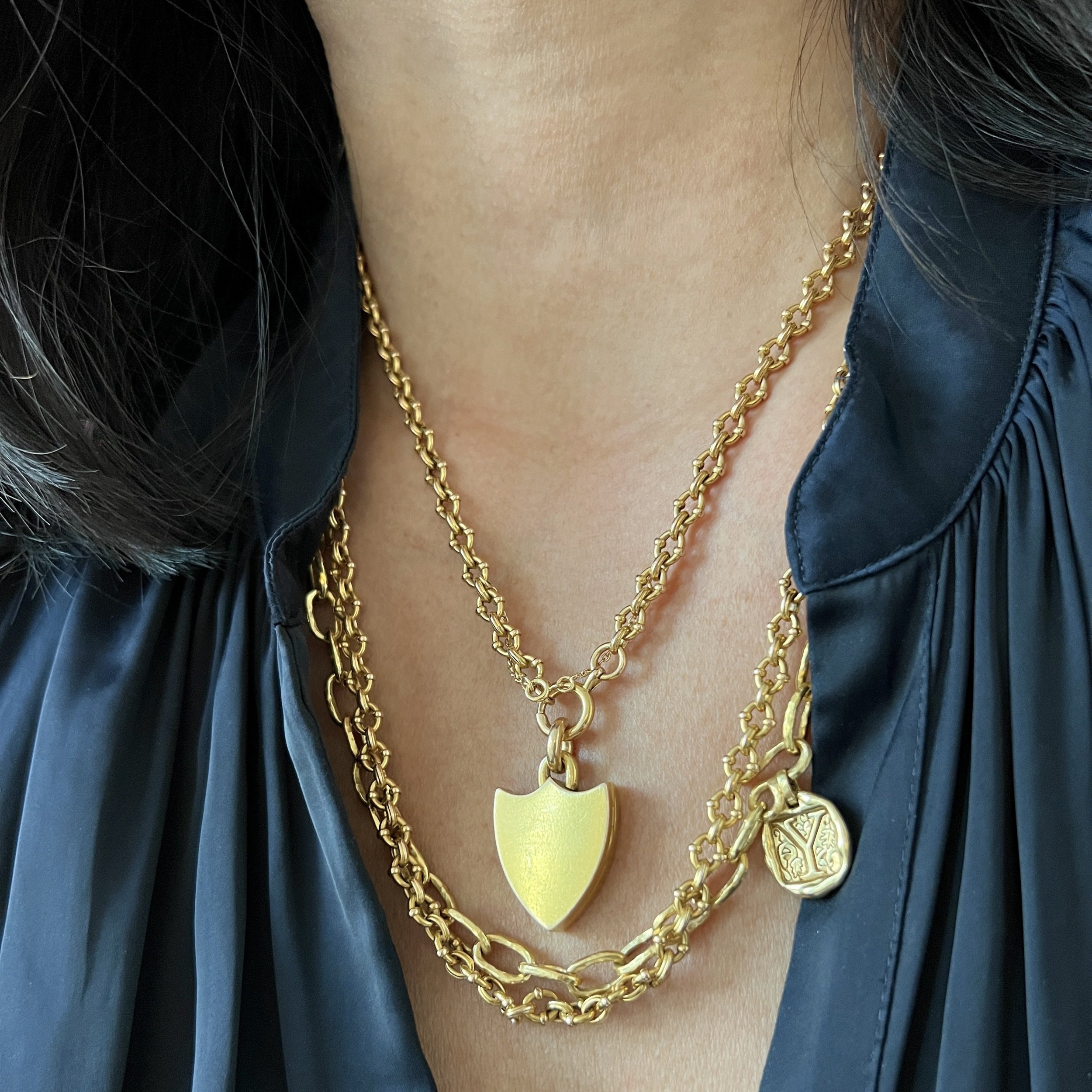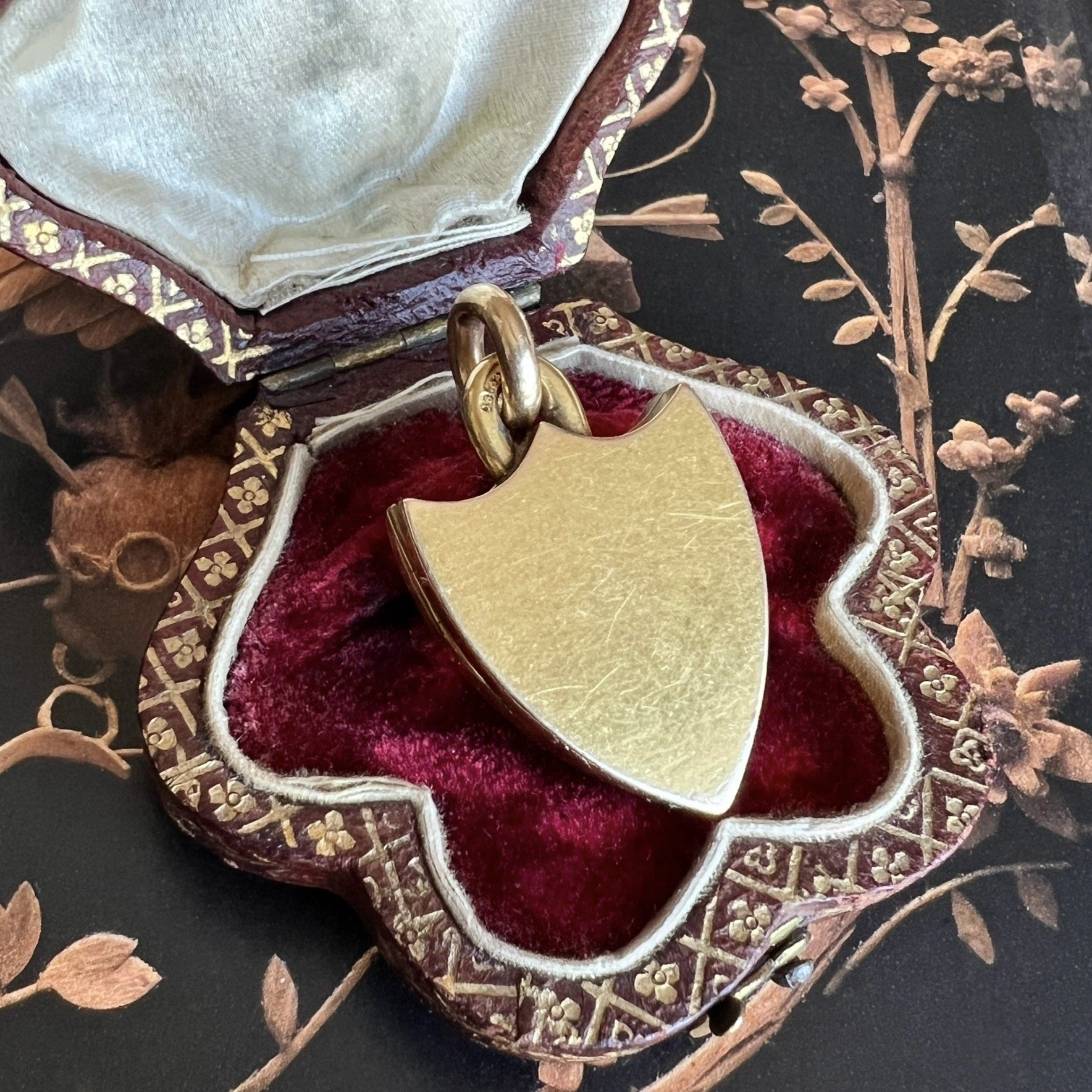- Shop
- (SOLD) Antique Georgian Gold and Gemstone Acrostic "REGARD" Heart Locket Pendant
(SOLD) Antique Georgian Gold and Gemstone Acrostic "REGARD" Heart Locket Pendant
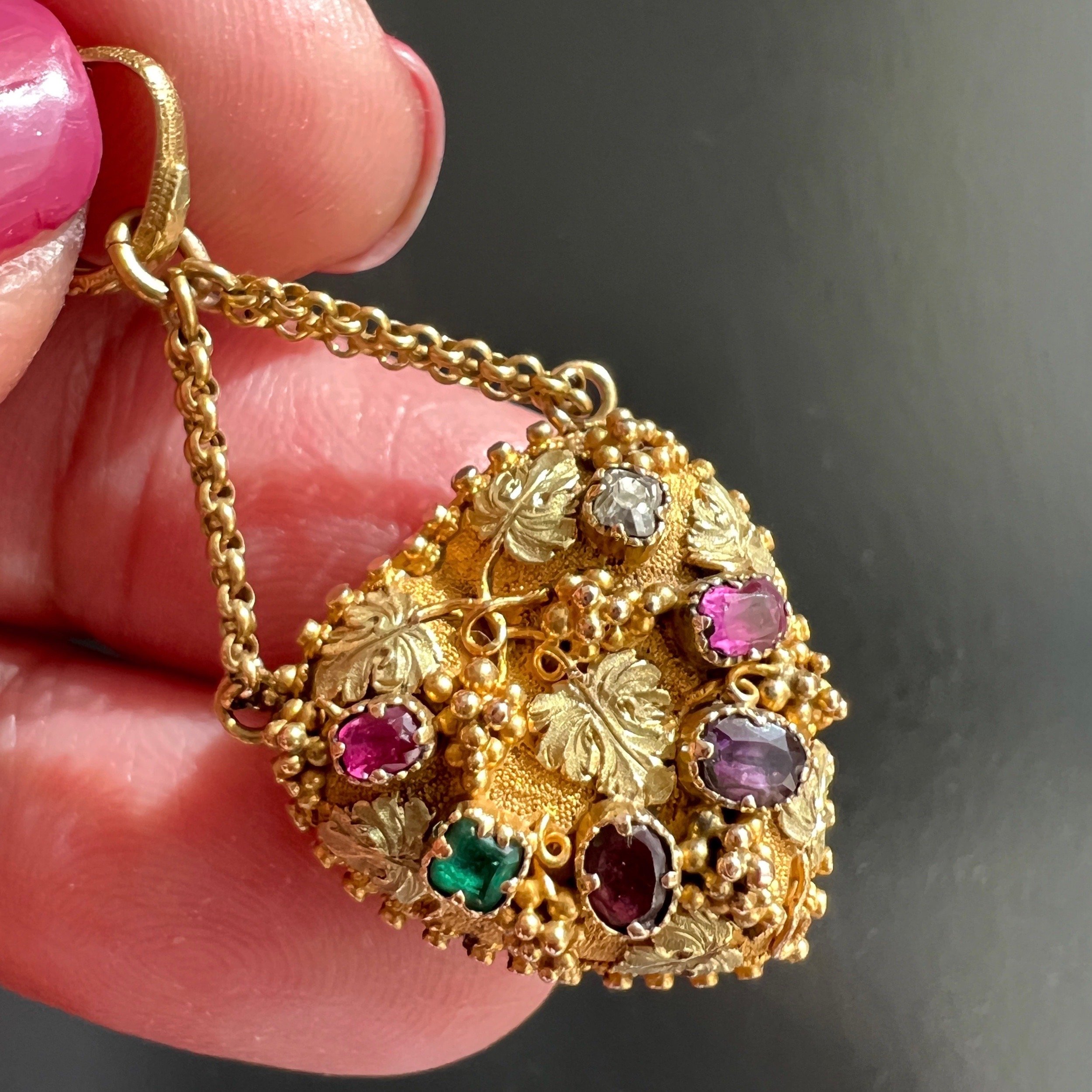
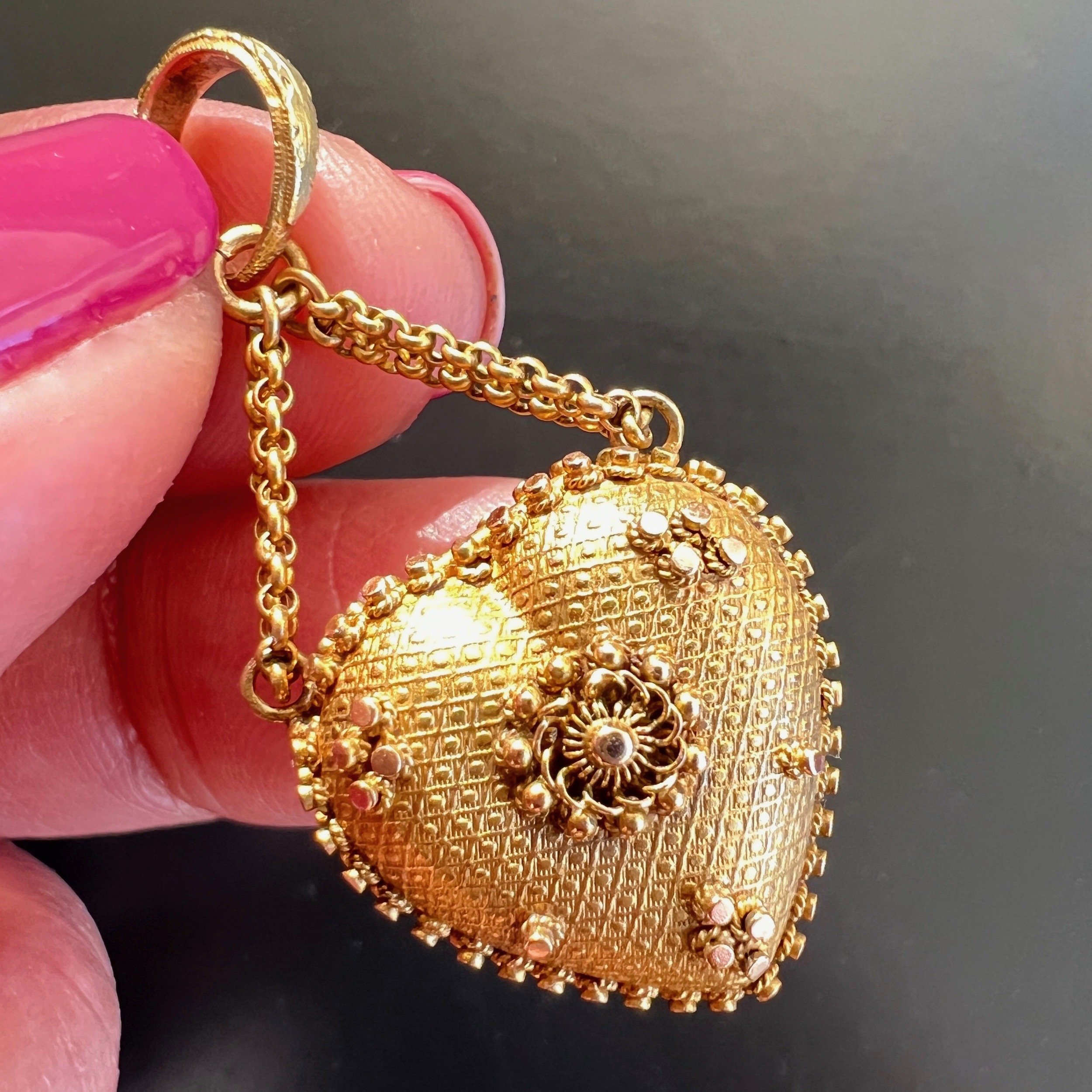
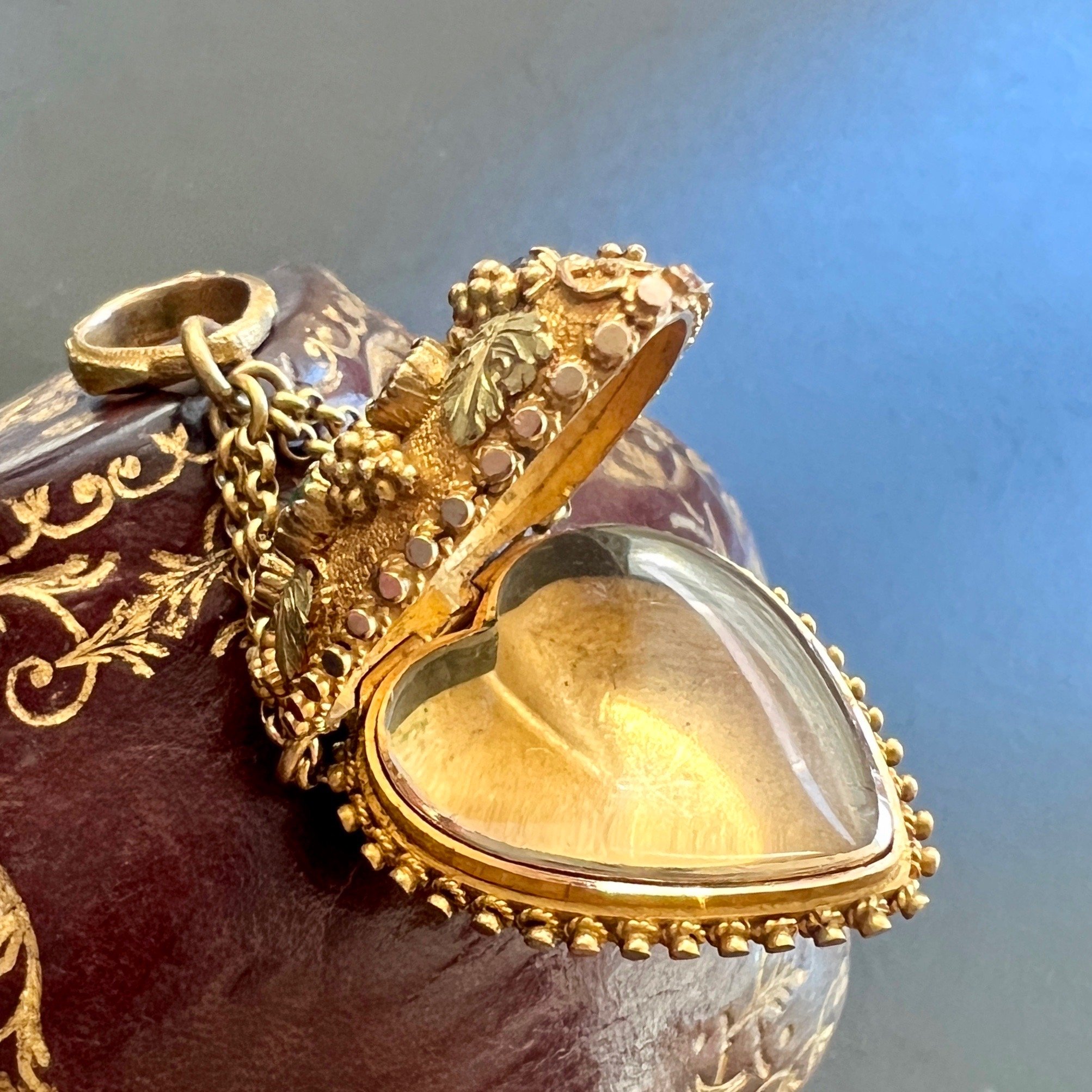
(SOLD) Antique Georgian Gold and Gemstone Acrostic "REGARD" Heart Locket Pendant
Seen, Loved.
This early 19th century (ca. 1820) locket is a love token, as expressed by the heart shape and the secret message of “Regard,” spelled out by the first letter of each gemstone — Ruby, Emerald, Garnet, Amethyst, Ruby, Diamond. At the time, “regard” conveyed love and deep affection.
Acrostic jewelry was popular in Georgian and Victorian society. Legend has it that the first acrostic jewels were French — created by Jean-Baptiste Mellerio, jeweler to the French court. Even Emperor Napoleon commissioned acrostic jewels.
This treasure is beautifully realized in two colors of gold (yellow and green), with cannetille and applied grape, leaf and vine details — symbols of fertility and abundance, suggesting this was a token of romantic or marital love. Today, this locket would also be a meaningful jewel to celebrate parenthood.
The heart locket hinges open from the top, revealing a compartment with its original rim and glass cover, ready for a keepsake. The locket is suspended from two doubled gold chains, connected to a loop with lovely applied floral and foliate details.
Early acrostic lockets are scarce, and we were delighted to discover this very fine example.
Similar examples may be found in the collection of the Victoria and Albert Museum (https://collections.vam.ac.uk/item/O115228/locket-unknown/, https://collections.vam.ac.uk/item/O74186/locket-unknown/ ).
Unmarked.
15k gold, ruby, emerald, garnet, amethyst, diamond.
Dimensions and weight:
● 41 mm long (including chains and loop) / 19 mm long (heart only)
● 19 mm wide
● 10.9 mm deep
● 8.2 grams (total) /6.8 grams (locket without frame and glass)
Period: Georgian
*Please note that all dimensions and weights are approximate. Age-commensurate wear may be present. This jewel is in wonderful antique condition; upon very close examination, we notice two of the tiny decorative border “studs” deficient: at 3 o’clock (front cover) and 1 o’clock (back cover) — in our opinion, minor, not readily apparent, and more than acceptable for a 200 year old jewel.
*For deliveries outside of the continental U.S., please contact us for shipping information.
Seen, Loved.
This early 19th century (ca. 1820) locket is a love token, as expressed by the heart shape and the secret message of “Regard,” spelled out by the first letter of each gemstone — Ruby, Emerald, Garnet, Amethyst, Ruby, Diamond. At the time, “regard” conveyed love and deep affection.
Acrostic jewelry was popular in Georgian and Victorian society. Legend has it that the first acrostic jewels were French — created by Jean-Baptiste Mellerio, jeweler to the French court. Even Emperor Napoleon commissioned acrostic jewels.
This treasure is beautifully realized in two colors of gold (yellow and green), with cannetille and applied grape, leaf and vine details — symbols of fertility and abundance, suggesting this was a token of romantic or marital love. Today, this locket would also be a meaningful jewel to celebrate parenthood.
The heart locket hinges open from the top, revealing a compartment with its original rim and glass cover, ready for a keepsake. The locket is suspended from two doubled gold chains, connected to a loop with lovely applied floral and foliate details.
Early acrostic lockets are scarce, and we were delighted to discover this very fine example.
Similar examples may be found in the collection of the Victoria and Albert Museum (https://collections.vam.ac.uk/item/O115228/locket-unknown/, https://collections.vam.ac.uk/item/O74186/locket-unknown/ ).
Unmarked.
15k gold, ruby, emerald, garnet, amethyst, diamond.
Dimensions and weight:
● 41 mm long (including chains and loop) / 19 mm long (heart only)
● 19 mm wide
● 10.9 mm deep
● 8.2 grams (total) /6.8 grams (locket without frame and glass)
Period: Georgian
*Please note that all dimensions and weights are approximate. Age-commensurate wear may be present. This jewel is in wonderful antique condition; upon very close examination, we notice two of the tiny decorative border “studs” deficient: at 3 o’clock (front cover) and 1 o’clock (back cover) — in our opinion, minor, not readily apparent, and more than acceptable for a 200 year old jewel.
*For deliveries outside of the continental U.S., please contact us for shipping information.

